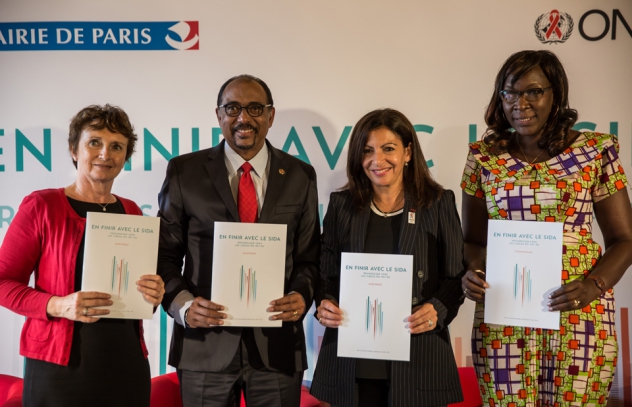UNAIDS has released a new report showing that for the first time the scales have tipped: more than half of all people living with HIV (53%) now have access to HIV treatment and AIDS-related deaths have almost halved since 2005. In 2016, 19.5 million of the 36.7 million people living with HIV had access to treatment, and AIDS-related deaths have fallen from 1.9 million in 2005 to 1 million in 2016. Provided that scale-up continues, this progress puts the world on track to reach the global target of 30 million people on treatment by 2020.
“We met the 2015 target of 15 million people on treatment and we are on track to double that number to 30 million and meet the 2020 target,” said Michel Sidibé, Executive Director of UNAIDS. “We will continue to scale up to reach everyone in need and honour our commitment of leaving no one behind.”
Since 2010, AIDS-related deaths have declined by 42%. New HIV infections have declined by 29%, including a 56% drop in new HIV infections among children over the same period, a remarkable achievement resulting from HIV treatment and prevention efforts that is putting eastern and southern Africa on track towards ending its AIDS epidemic.
The report, Ending AIDS: progress towards the 90–90–90 targets, gives a detailed analysis of progress and challenges towards achieving the 90–90–90 targets. The targets were launched in 2014 to accelerate progress so that, by 2020, 90% of all people living with HIV know their HIV status, 90% of all people with diagnosed HIV are accessing sustained antiretroviral therapy and 90% of all people accessing antiretroviral therapy are virally suppressed.
The report shows that in 2016 more than two thirds (70%) of people living with HIV now know their HIV status. Of the people who know their status, 77% were accessing treatment, and of the people accessing treatment, 82% were virally supressed, protecting their health and helping to prevent transmission of the virus.
Eastern and southern Africa, western and central Europe and North America and Latin America are on track to reach the 90–90–90 targets by 2020. In eastern and southern Africa, 76% of people living with HIV know their HIV status, 79% of people who know their HIV-positive status have access to antiretroviral therapy and 83% of people who are on treatment have undetectable levels of HIV—this equates to 50% of all people living with HIV in eastern and southern Africa with viral suppression. The Caribbean and Asia and the Pacific can also reach the 90–90–90 targets if programmes are further accelerated.
Seven countries have already achieved the 90–90–90 targets—Botswana, Cambodia, Denmark, Iceland, Singapore, Sweden and the United Kingdom of Great Britain and Northern Ireland—and many more are close to achieving it.
“Ending AIDS is possible – it is a shared engagement and aspiration. One that cities can lead while promoting inclusive societies for all,” said Anne Hidalgo, Mayor of Paris.
Resources for the AIDS response remain flat. At the end of 2016, around US$ 19 billion was available in low- and middle-income countries, with domestic resources accounting for 57% of the global total. An estimated US$ 26 billion will be needed for the global response to HIV by 2020.
“We are maximizing the use of every dollar available, but we are still US$ 7 billion short,” said Mr Sidibé. “With more international assistance, increased domestic funding, innovative financing and effective programming can end the AIDS epidemic by 2030.”




